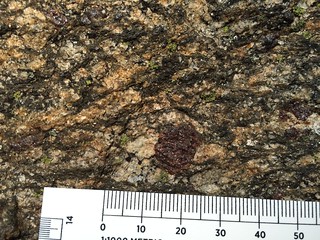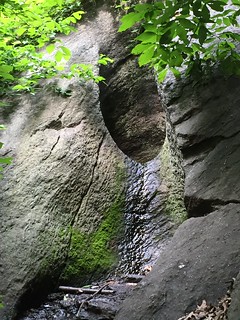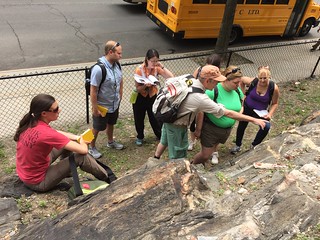The field trip leader was George Harlow, Curator, Department of Earth and Planetary Sciences at AMNH. We ambled around, first in the city, along Cooper Street and then into Isham Park. Then we went to Inwood Park. The aerial view map below is where we went in Manhattan, but not the Bronx. As you can see in the simplified geologic map and cross-section below, the geology is quite complex. It is also almost completely covered with vegetation, which is very often poison ivy. It is nuts. I longed for a western or southwest field location where all the outcrops are exposed.
The first very cool thing we saw was a great example of boudinage. See the image below (try squinting - they're there). The boudins were in the Inwood Marble and are a result of a more resistance or rigid layer (probably proto-sandstone) within a more plastic layer (possibly proto-limestone) undergoing compression.
We saw some good-sized garnets with eye-shaped feldspar growths:
Tramping into the Inwood Park, we saw "potholes," which I have seen elsewhere but did not know that they were created from glacial meltwater, with a rock or two swirling around and down, carving out a deep hole. The opening on this one - in Manhattan Schist - is about a 2-foot diameter.
By walking north and crossing the Henry Hudson bridge, we ended up in the Bronx, looking at the Fordham Gneiss. At this outcrop, we saw more garnet, amphibole, pyrite, and ptygmatic folding in the gneiss. A very good trip, all in all, and we were finished by 2pm.







No comments:
Post a Comment